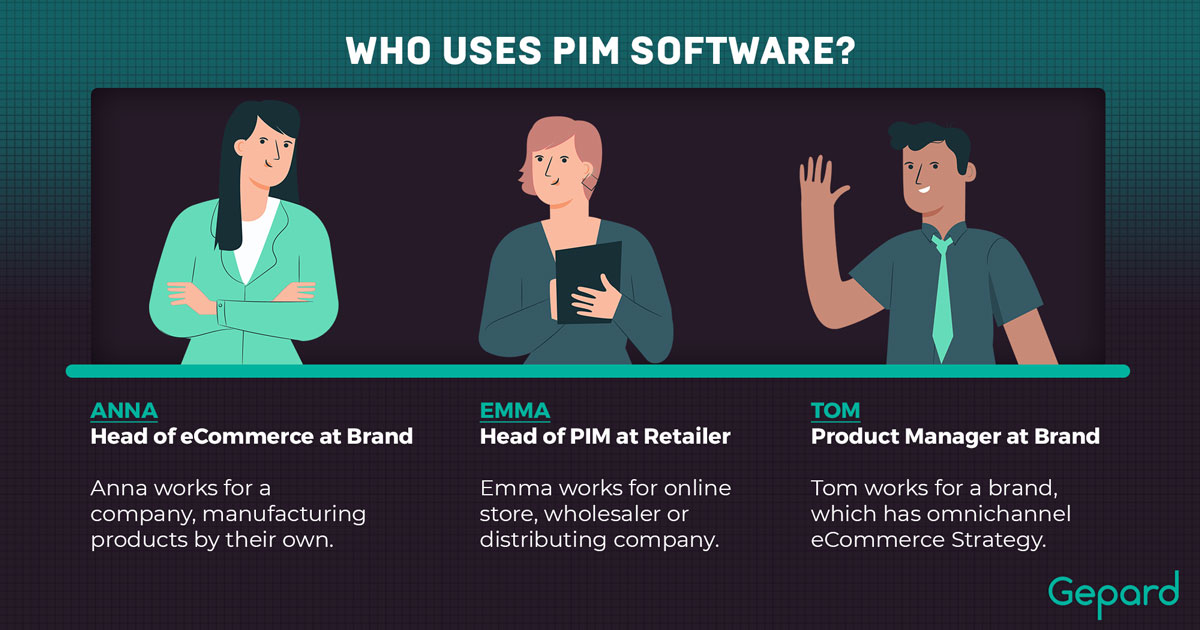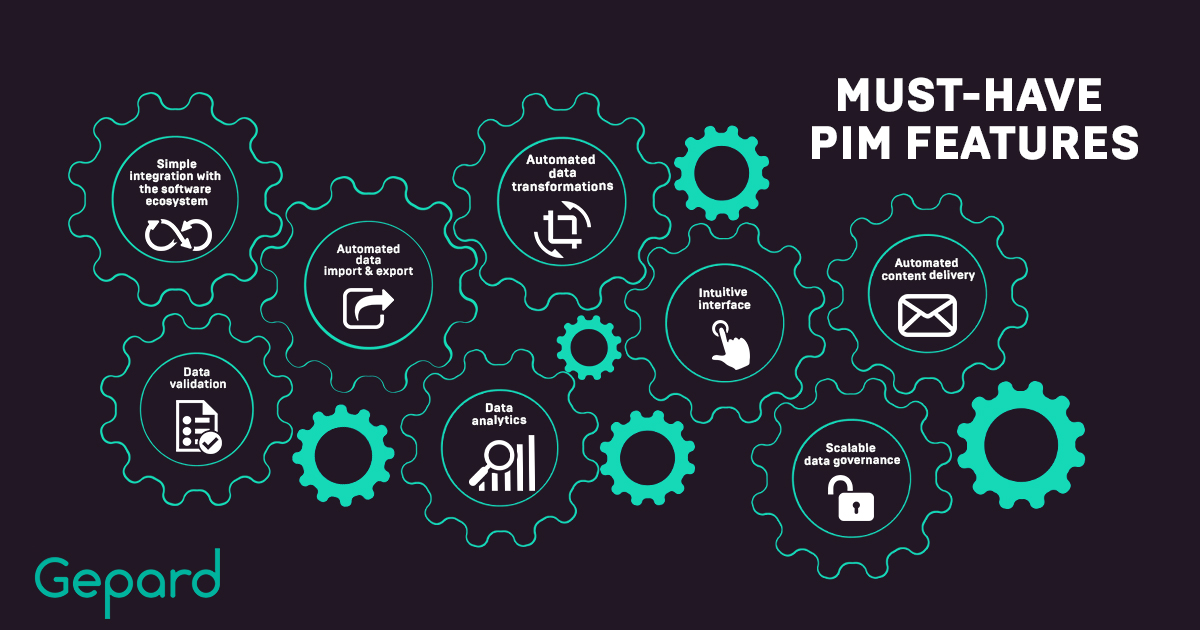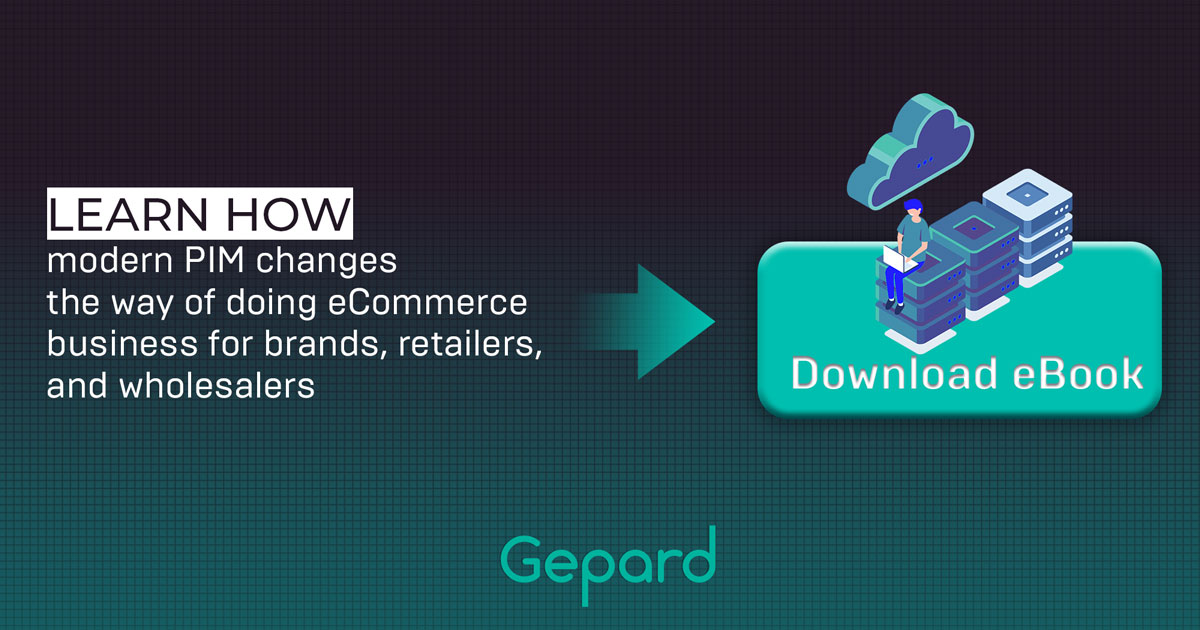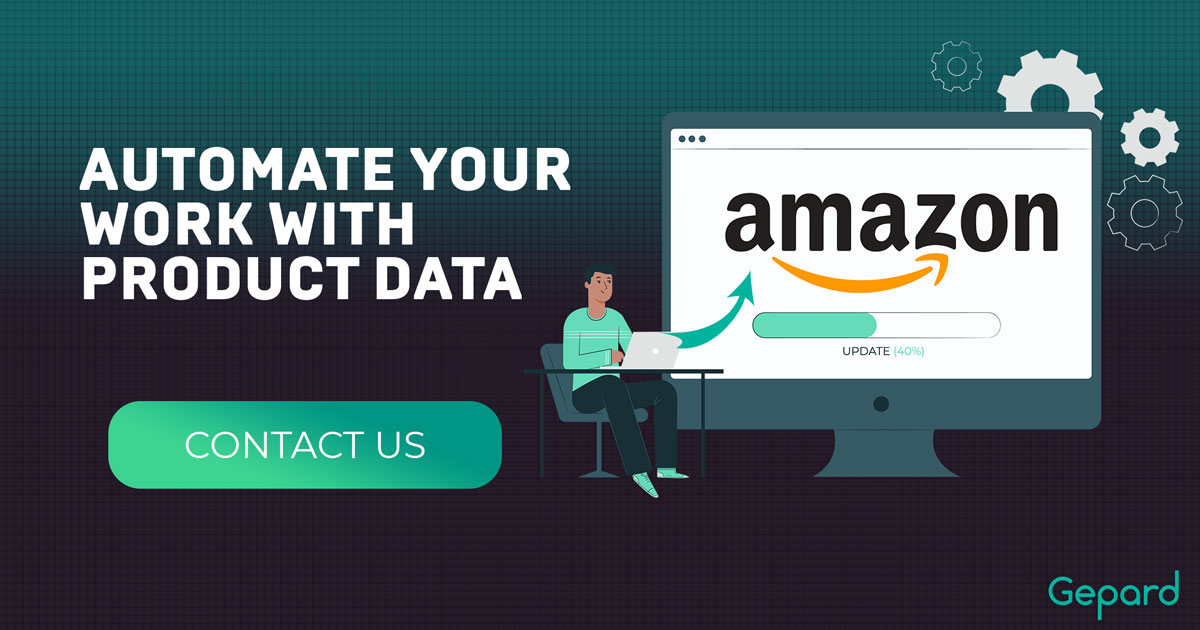What Is PIM And How To Integrate It?
If you are a manufacturer, product manager, or retailer, you probably know what is PIM system and even considered implementing one. If not, today you have a great chance to discover what a product information management tool is, and how it helps to increase your team productivity, expand your markets, boost conversions, and improve your customer loyalty. Learn how you can smoothly integrate PIM infrastructure into your business, improve your customer journey with its help and deliver one-of-a-kind shopper experiences.
What Is PIM?
Let’s describe how it works in practice. For brands operating globally, the major challenge is to adjust the product information to each retailer’s requirements. There are also specific market demands for retailers to be able to sell products in several geographic locations. Thus, they have to manage what is PIM data, and their digital assets in multiple languages and formats via a centralized catalog. To collect, refine, edit, and save product information automatically there are special PIM eCommerce software solutions.
Frequently, the PIM term can be confused with a number of other related eCommerce solutions acronyms. Let’s define a few solutions that users associate with.
- PXM (Product Experience Management). This system focuses on delivering the product content to the end user and makes sure that the experience is of the highest quality. Product information management tool serves as a foundation for PXM.
- PDM (Product Data Management). This tool is primarily tailored to the internal data assets exchange processes. Engineers, designers, marketers (CMO, product data managers), and similar people are the main users of this system (even the company’s c-suite).
- PCM (Product Content Management). This solution is very similar to the PIM eCommerce system, the main difference is that it doesn’t support data aggregation from multiple channels. So you need to import all the information manually, which is time-consuming.
- MDM (Master Data Management). MDM is a complex enterprise solution, which combines all the business units (employees, processes, data from the other systems), while the product information management platform is mostly used by teams involved in sales & marketing.
Read more about the difference between other eCommerce solutions which can help you to manage product information, make your teams more productive, and scale your business.
What Does A PIM Do?
PIM software solves major data-related issues such as data quality, inaccuracies and inconsistencies, exhausting manual and duplicate work, costly data asset management, time-to-market delays, and poor customer experience. PIM systems centralize and structure large amounts of product data assets by keeping them in one place, accessible to company employees, partners, and other data owners (depending on the defined data permissions).
Thanks to automated data asset management processes, all team members can easily improve and enrich product content. eCommerce PIM smoothly connects with sales platforms and delivers product information to marketplaces, according to their requirements. The information is constantly updated, which brings the chances of data errors to a minimum. Correct product data feed keeps customers satisfied, boosts your brand’s visibility and reputation, and helps you reach greater audiences.
What Is PIM: Main Features Of Product Information Management
What are the ingredients of successful eCommerce PIM tools? The core features of the PIM system should be fast and straightforward data import processes, an understandable interface that can easily onboard non-technical users, and a variety of features for creating rich content. Besides, efficient management of product data assets and product taxonomy, automated data analytics, and excellent data governance help companies boost their eCommerce performance. An ability to syndicate product data across multiple marketplaces is another ultimate feature to search in the PIM for eCommerce tools.
When you research PIM platforms, make sure to choose the one that has these must-have PIM features. Discover more about product information management in our “What is a PIM now” E-book – get your free copy now.
Product Information Management Capabilities
Adjusting the product data information for each sales channel can be done manually by spending hours on making sure data will be consistent and uniform, or with the help of a dedicated syndication solution. Here are the product information management tool features that can help optimize your eCommerce performance:
- Product content syndication via custom API.
- Automated data transformations to various sales channel needs.
- PIM integration with the software ecosystem streamlines operations.
- Data validation to control the product data quality.
- Multi-tenant architecture to control the access level for each user.
- Content creation, enrichment, and variations.
- Data asset exchange automation to transfer documents electronically.
- Content standardization to simplify content exchange.
What Kind Of Information Does PIM System Store?
Generally, PIM solutions store all the required information on the product, including description, configuration, taxation, composition, technical information, hardware version, and other types of accompanying information. In addition, it can also store rich media files (such as images, videos, or documents on the product). Look through the points of data that can be stored in a product information management application:
- Basic product data. MPN, GTIN, Model name, and Product images.
- Marketing Messaging. Short marketing description, Marketing texts, Warranty notes.
- Rich content. Reasons-to-buy, Bullet points, Product stories, and their values, Videos, PDFs, Guides, and Manuals.
- Product specifications. Age group, Materials, Hazardous materials, Product dimensions, Package dimensions, Product weight, Package weight, Product colors, Warnings, and other important relevant facts about this good.
The list of product information that should be stored in a product information management tool depends on the particular business’s needs and can vary significantly.
To Use Or Not To Use PIM Tools?
Whether to use PIM for eCommerce or not to use, that is the question. As we have already learned about what is PIM tool – it is a dedicated PIM system that can greatly facilitate the company’s product listing process and other aspects of a business. However, it is not always a must to use a PIM solution as there are cases where you can handle product information without it.
Read more about the simple PIM system and who needs it.
Who Uses PIM Systems? What Areas Have A Better Fit For It?
- Small businesses. The main goal here is to keep data centralized and allow managing it in one place making it easy to share with partners, retailers, or buyers.
- Manufacturers. PIM management tools can speed up the time-to-market of products and reduce the costs of product information creation. This may lower the final price in the long run.
- Marketplaces & online retailers. Product information management solution makes it easier to add new product categories and help with geographic expansion.

When To Use and When Not To Use PIM?
To use or not to use PIM, that is the question. As we already know, a dedicated PIM system can greatly facilitate the company’s product listing process and other aspects of a business. However, it is not always a must to use a PIM solution as there are cases where you can handle product information without it.
Reasons to use PIM
- There’s a need for data-rich information.
- You need SEO adaptation for your descriptions.
- You have multiple suppliers and sources of distribution.
- You need to update the price and product catalog often.
- You need to deliver data to various end-points for publication online or for print editions.
- You want to develop at a faster pace.
Conditions when PIM is unnecessary
- If you only use one platform or one distribution channel.
- If your list of products you sell annually is relatively small (less than 1000 positions).
- If you only work with one or two manufacturers.
- If the product line does not require data-rich descriptions.
How To Choose A Product Information Management Tool
There are dozens of PIM solutions for every budget and taste. And it’s important to choose the one that is best for your particular demand. First of all, you have to compile a list of requirements for the solution which will take some research, and then proceed to the selection. Here’s what you should consider before selecting the right software.
Product information management best practices:
1. Conduct the assessment of your PIM management needs, depending on your digital asset and amount of products sold. Talk with the stakeholders, and record your ideas and expectations.
2. Find out if the system is compatible with the platforms you sell on and gather data. If not, the system should have a pre-built feature to connect with your third-party services manually.
3. The other step is to evaluate if the system is flexible enough to support business growth and unexpected repositioning. Certain PIM providers have various solution versions and allow moving from one edition to another (for example, to change the solution from on-premises (the one that you can download and install) to the hosted one, which is also priced differently). It is really valuable to be able to test the sample or trial solution for a couple of days before starting to use the one that fits your business community the most.
4. Consider selecting a PIM that provides multiple languages for localization and allows you to translate content. Even if there’s no need for that at the moment, you might still find it vital in the future when you decide to expand your business. PIM system has to be easy to use and learn not only to save your time but also to make sure your employees are comfortable with its usage daily.
What Challenges Can You Encounter While Implementing A PIM System To Your Business?
The search for the right PIM and its launch are complex processes, requiring deep analysis of your current data ecosystem. To make hard things easy, Gepard’s CEO recently shared our internal high-level roadmap to PIM implementation. It would save you a lot of time in defining the requirements of your ideal product information management platform and planning PIM integration.
Here are the main challenges businesses face:
1. Data inconsistency. Using PIM by multiple users may lead to content errors. However, the best product information management software has advanced functionality that can offer backups, activity logs, and technical support, which reduces the number of data errors.
2. Onboarding non-technical users. Sometimes eCommerce product information management software may seem to be difficult to use for non-IT employees. That’s why product information management vendors always organize guided training sessions & workshops to help staff get to know the system’s logic and workflow.
3. Involving lots of stakeholders. It is good when many people take care of future product information management architecture, although, this causes a larger amount of negotiations and slows down the PIM integration process. Thus, it’s crucial to define roles and choose a single person who will be in charge of enterprise product information management workflow implementation.
How Gepard PIM Could Grow Your Efficiency
Gepard PIM improves operations efficiency by 75%. By using Gepard Product Information Management software, everyone can start to leverage the benefits of technology instead of struggling with the data sheets: keep all rich product content in a single place, easily collaborate with colleagues, and connect new eCommerce channels quickly to drive your business growth.
Here are the main benefits of implementing Gepard PIM:
- Enormous amounts of data are stored in one place.
- Handling data with the help of a powerful import engine.
- Smooth communication between the departments.
- Organized product catalogs and faster go-to-market.
- Less manual work and no delays in product launches.
- Lack of error-prone and data-validation tools before publishing.
- Multilingual interface and various locales support.
- Can be integrated with the DAM system.
- API-based connectors to a variety of eCommerce platforms.
- Great PIM returns on investment if used properly.
 Here is a workflow of How Gepard PIM works:
Here is a workflow of How Gepard PIM works:
1. Centralize. Easily insert and store your content in a single system (using supported CSV or XLSX formats), classify, and govern your data.
2. Enrich. Set up simple workflows, add the attributes and rich media, create & collaborate on it with teams from other departments, and optimize your data-related activities. Localize your content to each specific region.
3. Deliver. Distribute your compelling emotional product content directly to eCommerce platforms, and marketplaces, and have it sold on different online stores, have your data standardized, delivered, and adapted to the ever-changing requirements of retailers and marketplaces.
4. Control. Use the digital shelf analytics feature to measure the quality of your product information across different platforms and monitor the different versions of product descriptions posted by content providers.
Roadmap To PIM Implementation

1. Identify the data sources and data owners inside your organization
Most likely your data is dispersed within your organization departments (otherwise you wouldn’t be busy with building PIM, heh?:). Hence you will have the job to put multiple different data streams together, aligning discrepancies in the formats.
2. Define data consumers & data end-points
Data consumers are individuals or systems that rely on product information to perform their tasks or make informed decisions. Data end-points are the various touchpoints where product information is consumed or utilized, such as e-commerce websites, mobile apps, and marketing platforms. Understanding and identifying data consumers and endpoints is crucial in planning and implementing a successful PIM system.
3. Learn your data and how they are provided: formats, structures, and taxonomies
- How does this align with your data consumers’ expectations?
- Which data entities are needed?
- Think of stuff like marketing texts, images & rich media, product specifications, approach to product classification & categorization, and cross-product relations.
- How your data should be localized in different languages?
- Can your data owners facilitate the requirements of data consumers? Which data transformation is needed along the way of data flow? Is data consistent enough to facilitate the requirements of data consumers?
- It’s a good idea to cluster your data consumers into groups, or channels – that will help you to identify the common needs and requirements.
4. Define the roles within data flow and assign them to the right people
Think of the data asset management flows like the data entry process, quality assurance, data enrichment, taxonomy development and management, and communication flow with data consumers and data owners.
5. Define the way data hits the PIM
Points to consider are automated data import, manual data entry, data formats, and the transportation layer (API, bulk imports, etc).
6. Define the output for PIM
Your output means how your PIM is going to provide your data consumers with the content, in which form, and by which transports.
- Different data consumers may require other transports and formats, so consider the data format and taxonomy transformation needed for your content consumers.
- Each output variation will add an additional complexity layer to your designs and test cases.
- It may be the case that not all data should be accessible to all consumers. Neither all data might not be relevant to all consumers. So, please, consider that there might be a DRM (Digital Rights Management) layer needed between the data and data consumers.
How Сould Gepard Help With Delivering Product Content?
Another obstacle while integrating a PIM solution for businesses is the digital asset delivery from the PIM system to sales channels which is called product content syndication. Each marketplace and eCommerce platform has its data structure and taxonomy rules which might go contrary to the settings of your solution.
Yet, it should not stop you from growing your business maturity. The problem of data structure and taxonomy can be solved either by manually spending hours on making sure data will be consistent and uniform or deciding to ditch the product data spreadsheets and manage content with the help of a dedicated syndication solution with an assortment of features.
Such a solution can be the Gepard content syndication platform. It integrates with the PIM solution and enables complying content delivery to any eCommerce store or marketplace. Each month 120+ million products are pushed automatically to various retail channels by Gepard eCommerce solution. We are eager to help you with everything related to product information management theory and practice.
What’s more, Gepard’s cloud-native solution offers a digital shelf analytics feature that allows you to track your entire digital asset completeness across different retail platforms, and, in such a way, enhance the quality of your data assets.
Gepard PIM: Robust Solution Empowering Your Business
Product Information Management tool is an awesome tool for eCommerce business development. However, as there are clear benefits, PIMs require serious attention to details and research before implementation. If you consider using it, first explore product information management trends, learn what is PIM, compare different solutions, then try to define your business needs and calculate whether it’s going to be beneficial.
Do you still have questions about the advantages of PIM solution for your business and wonder what you can gain with it? Request your personalized demo now, and our dedicated experts will consult you about your special case and will provide you with a quote for a tailor-made solution.






